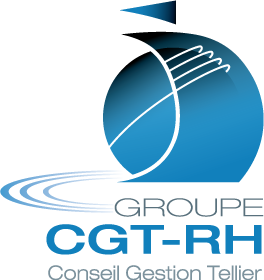By buying and selling in high volumes and capitalizing on tiny discrepancies in prices throughout markets, HFTs are in a place to accumulate small, low-risk earnings that add up over time. Welcome to the exciting world of High-Frequency Trading (HFT), the place computers and algorithms dominate the monetary markets. HFT trading has revolutionized the means in which transactions are executed within the stock market, enabling traders to make lightning-fast trades in microseconds. The use of advanced know-how and complicated algorithms has enabled HFT merchants to realize a competitive edge and capitalize on even the smallest price fluctuations.
That’s as a result of complicated pc algorithms could detect opportunities within the stock market earlier than humans can identify them, or they’ll determine when (and where) to get the very best worth. By buying and selling at lightning velocity, high-frequency traders might revenue from even small changes out there. (As with all trading though, high-frequency buying and selling may also end in losses).
How Does High-frequency Trading Affect The Market?
Speed advantages enable low latency systems to detect block trades and dark pool exercise to commerce ahead of coming worth impacts. Velocity also enhances market-making and statistical arbitrage methods by way of improved queue position and fill charges. Winning by milliseconds requires minimized technical latency via direct information feeds, co-located servers, and short network routing. Statistical arbitrage continues to evolve as a profitable strategy for sophisticated high-frequency merchants. Whereas adding market effectivity by correcting anomalies, regulators watch that methods do not manipulate markets.
Rogers materials exhibit excellent resistance and durability to mechanical stress. This makes them appropriate for applications requiring reliable and robust performance. The rigidity of the PCB materials allows it to retain its shape and performance even when the working situations are difficult.
Definition And Historical Past Of High Frequency Trading (hft)
Investigations revealed that HFT algorithms played a big function in these extreme fluctuations. One major drawback of Excessive Frequency Buying And Selling (HFT) is the removing of human choice making from the trading process. In HFT, advanced algorithms and laptop applications replace human analysis and judgment. This signifies that trading decisions are executed inside fractions of a second based on predefined data and patterns, without allowing for human intervention or analysis. The phenomenon of “spoofing” and “layering” by HFTs has drawn scrutiny. This entails submitting fake orders to affect market costs and then capitalizing on the following movements.
Different sources of income for HFT companies are the charges they receive for offering liquidity for digital communications networks and some exchanges. HFT corporations act as market makers by creating bid-ask spreads and churning principally low-priced, high-volume stocks many times daily. By constantly shopping for and selling securities, they guarantee that there is always a market for them, which helps cut back bid-ask spreads and increases market efficiency. There can be a significant overlap between a « market maker » and « HFT firm ». By doing so, market makers present a counterpart to incoming market orders.
Recently we’re seeing extra exercise in the international trade markets. Corporations may pay exchanges to fill their orders first and pay for early entry to public data. The SEC found that the rationale for the crash was a hedge fund selling hundreds of thousands of dollars of inventory.
Advantages Of Fr4 Material
High-Frequency Trading (HFT) has garnered attention and recognition in the monetary business as a end result of a number of key advantages it presents. This data is instructional, and isn’t an offer to sell or a solicitation of a suggestion to buy any safety. This information just isn’t a advice to buy, hold, or sell an investment or financial product, or take any action.
- Market-making is a strategy that plays a central function in high-frequency buying and selling.
- A « market maker » is a firm that stands prepared to purchase and promote a specific inventory on an everyday and continuous foundation at a publicly quoted worth.
- Strict “speed bumps” might be imposed to curb extreme transactions.
- This can create an phantasm of market depth and stability, while in reality, traders could not have the flexibility to totally capitalize on this liquidity.
Flash crashes triggered by HFTs additionally undermine total market confidence. However, proponents counter that HFT supplies crucial liquidity and narrows spreads for all buyers. The core points are round unequal access and whether or not blindingly fast buying and selling distorts market quality.
” analyzed the complete transaction historical past of the Taiwan Inventory Trade between 1992 and 2006. Additionally, it tied the behavior of gamblers and drivers who get extra speeding tickets to overtrading, and cited research exhibiting that legalized gambling has an inverse effect on buying and selling volume. Algorithms are the heart and soul of High-Frequency Trading (HFT). They play a important position in analyzing market knowledge, making buying and selling choices, and executing trades with precision and speed. Options buying and selling entails vital risk and is not appropriate for all clients.
However, HFT will likely stay an influential drive in stock trading given the aggressive advantages it provides firms prepared to invest in the infrastructure and expertise required. One Other means these firms earn cash is by looking for worth discrepancies between securities on completely different High-frequency Trading exchanges or asset lessons. A proprietary buying and selling system appears for short-term inconsistencies in costs throughout totally different exchanges.
